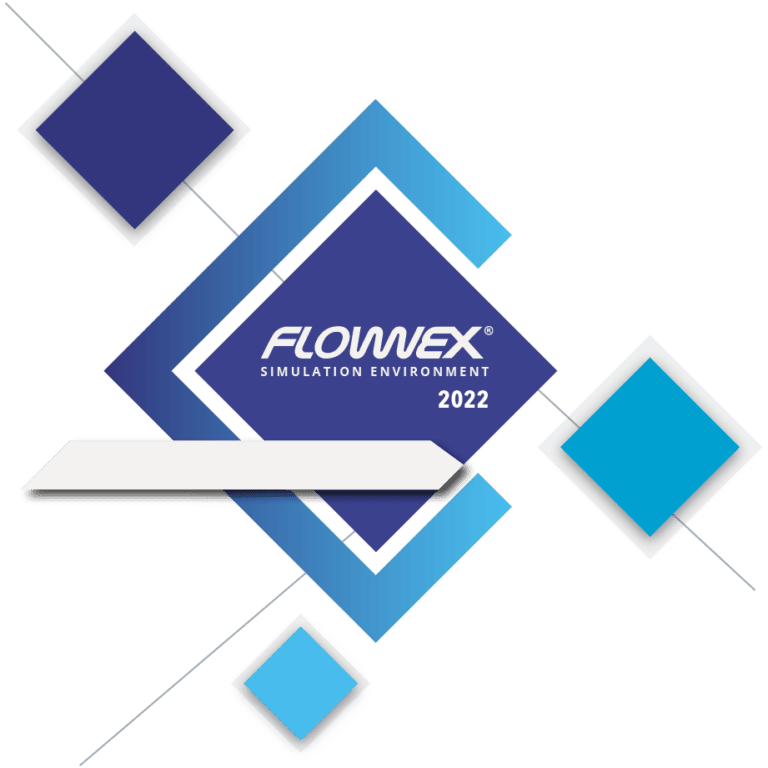The latest Flownex® 2022 update allows for better modeling of multiple heat transfer paths to a single pipe element when selecting the added option of first-order discretization on the heat transfer elements. The gravitational acceleration used within the momentum and energy equations and the ambient pressure are now user-defined inputs in the Flow Solver. This is specifically useful when using Flownex for space applications. Post-processing results are now even easier with new options to save all graphs as CSVs or images by simply pressing a button. The major and minor enhancements will be described below for the Flownex 2022 Update 1 release. Download the new release here!
MAJOR ENHANCEMENTS
HEAT TRANSFER COMPONENT
- An option has been added to specify the Order of discretization for the Composite Heat Transfer and Distributed Heat Source components, as seen in Figure 1.

- The First order approach has been implemented as an option to model convection heat transfer using an element’s inlet temperature instead of the average element temperature used in the Second-order approach. The difference between the discretization options can be seen in Figure 2.

- The added First order option allows for multiple convection heat transfer paths to a single element without violating the boundedness requirement but results in loss of accuracy, and therefore more increments will be required before reaching grid independence.
- Two phase heat transfer scaling factor inputs have been added. These scaling factors can be applied to obtain better agreement with experimental data. The scaling factor inputs can be seen in Figure 3 and are for the:
- Critical Heat Flux,
- Nucleate Boiling Coefficient and
- Film Boiling Coefficient.

FLOW SOLVER
- The gravitational acceleration value used within the solver’s momentum and energy equations is now an input in the Flow Solver settings. The default value is 9.806 m/s2.

- The ambient pressure is now a user-defined input in the Flow Solver. The default value is 101.325 kPa.

GRAPHS
- All graphs can now be exported as CSV files and images using the Save All Graphs As CSVs or Save All Graphs As Images buttons on the Results ribbon, as seen in Figure 6. The speed of exporting graphs has also been improved.

- A legend for the locus plots, for example, the TS diagram, has been added, as seen in Figure 7.

- Flow Path Graphs are now enabled for Flow Conduit Links.
MINOR ENHANCEMENTS
SCRIPTS
- The Steady State Controller now has an added option for Reverse or Forward acting by specifying the Reverse acting option as Yes or No, as seen in Figure 8.

- The steady-state reference temperatures are now editable in the Runtime Neutronics Script property page. This enables a user to update the reference temperatures based on average temperature results obtained from, for example, a null transient.

DISTRIBUTED CONTROL SYSTEM
- All Timer components in the Distributed Control System (DCS) library will have their Output active during Steady State (as if the timer has completed). Previously the Output was not active.

- The properties of DCS components are now directly accessible within Scripts. The properties can be accessed by using the “.Value” method, instead of the “.setValueFromString” method.
USER INTERFACE
- The memory usage by the user interface during an active session has been decreased.
PCF IMPORTS
- An option has been added to combine nearby nodes when importing PCF files. When selecting “Combine Nearby Nodes”, it will be possible to specify the tolerance for nodes within a certain distance to each other to be combined as a single node when imported. This should be used to overcome import issues where the outlet of a bend/fitting and inlet of the connected pipe are separated by a small distance in the PCF file.

PIPE
- Pipe roughness is treated more consistently when a two-phase fluid is selected. An option has been added to specify a local roughness as part of the convection input when the Dittus-Boelter option is selected as the convection coefficient correlation. The roughness can either be obtained from a connected Pipe component or specified if heat transfer is associated with a Node, for example. The added tube roughness option can be seen in Figure 12.

PLATFORM
- Data transfer will now always occur before any other solver executes.
- Solvers now execute in series and alphabetic order by default.
- Options have been added in the Simulation Settings dialog to run tasks in parallel and to only show the tasks with step events, as seen in Figure 13. These tasks run during a timestep, and the order of these tasks can change the results of the simulation.

HEAT TRANSFER COMPONENT
- The Fin efficiency and Fouling factor inputs are now dynamic and can be changed during transient simulations.
FUNCTIONAL MOCK-UP INTERFACE (FMI)
- The compatibility for importing and exporting various types of Functional Mock-up Units (FMUs) has been improved.



















